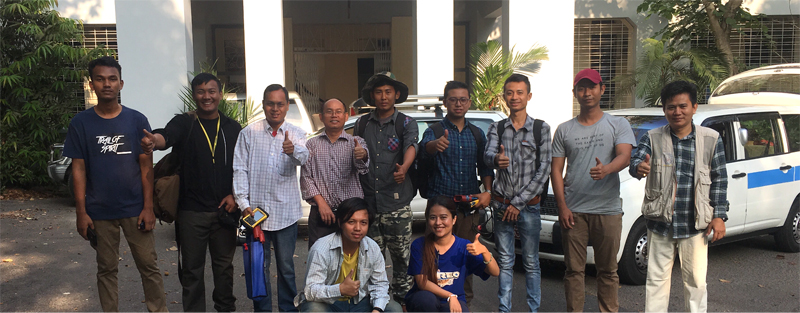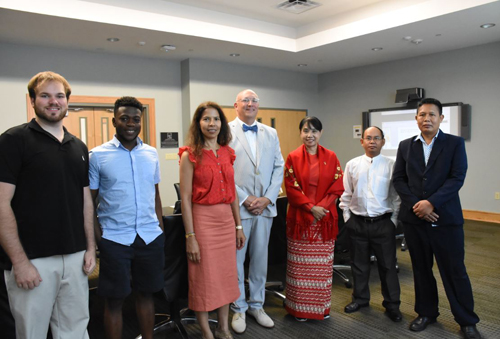22 April 2022–Like many people, geophysicist Patricia Persaud had big plans for March 2020. She and her students from Louisiana State University were ready to board a plane to install a geophone array in Yangon, Myanmar in collaboration with university professors and students in the city.
COVID-19 grounded Persaud and her students—but not the project itself. With remote training on the installation of the nodal seismic stations from Persaud’s team, the Myanmar Universities Seismic Experiment (MUSE) fieldworkers deployed 110 nodes across three seismic profiles in the city in March 2020.

At the Seismological Society of America’s Annual Meeting, Persaud shared the story of how the MUSE project overcame unexpected obstacles and helped build geophysics capacity in the nation of 55 million people. The need for monitoring in the region is critical: a potentially locked subduction zone to its west could be capable of generating a magnitude 9 earthquake, and a major strike-slip fault running north-south through the country could host a magnitude 8 earthquake.
Although the country is again closed to international researchers after a military coup in 2021, the researchers are analyzing data from the 2020 project to create a profile of depths of the sedimentary basin below Yangon. “It’s nice when great science also comes from great capacity-building efforts,” Persaud said.
The Myanmar project is based on the 2017-2019 Basin Amplification Seismic Investigation (BASIN) project, during which volunteers placed 744 temporary geophone stations in the greater Los Angeles area. Persaud, a co-leader of BASIN, is also part of a large National Science Foundation study installing broadband seismometers from Bangladesh to Myanmar.
“I went to Myanmar on that project in 2018, and what I found was that there was a really huge need to involve the universities there in the work that we’re doing,” she explained. Funded by Geoscientists without Borders, Persaud contacted universities in Myanmar and eventually began the MUSE collaboration with Khin Win, a physics professor at the University of Yangon, and Myo Thant from the Myanmar Earthquake Committee.
The Yangon array largely copies the stations and installation process developed for BASIN. Before the pandemic, Persaud was able to bring a few researchers from Myanmar to sketch out a general idea of where the array should be deployed, but that was all the advance planning before the lockdowns started.
Instead, Persaud and her colleagues found themselves scrambling to set up virtual training for the 11 professors and students in Myanmar who would do the installation completely by themselves. “It’s not to be assumed that you can get good internet access and all the facilities you need to do a virtual training, but it worked,” Persaud said. “Then they had to figure out where to put the instruments, how to put them in, and how to inform the homeowners where the nodes were placed about what was going on.”

The instruments recorded data for a month. By then, the monsoon season in Myanmar had started, and the team was worried about instruments being flooded or swept away. “If the instruments stay underwater too long, they lose their GPS signal, and the GPS is what helps them keep their timing,” Persaud explained.
Flooding wasn’t a huge worry because the array had stopped recording, but the team told homeowners they could dig up and keep the nodes until they could be retrieved—because new COVID-19 lockdowns in Myanmar kept the researchers out of the field.
“It was a successful project in the end with impactful collaborations in Myanmar but everything leading up to it was extremely challenging,” Persaud said.
Both BASIN and MUSE are great examples of how urban seismology projects can provide fieldwork experiences for underrepresented groups in geoscience studies, who may not be able to commit to lengthy or distant field seasons, she noted.
“What I think both the BASIN project and the MUSE project show is that it’s actually completely doable and successful to have people who are from the community or from other universities or maybe non-geoscientists work on doing these types of projects,” she said.
